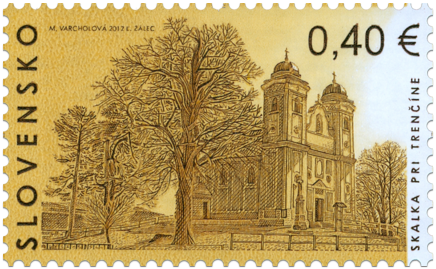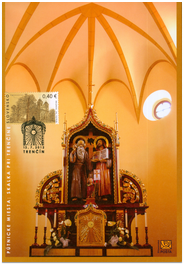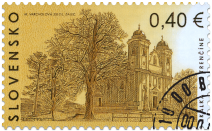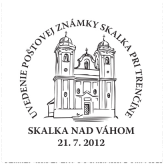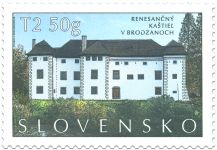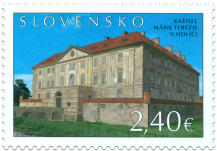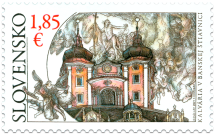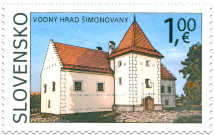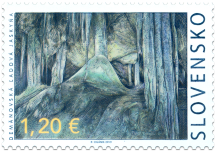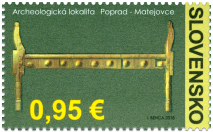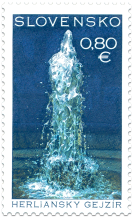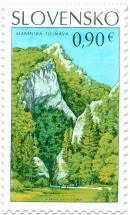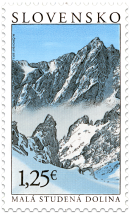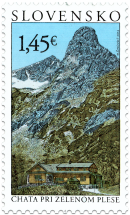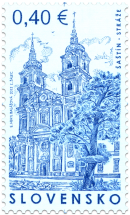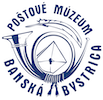521 Date of issue
13.07.2012 Face value
0.40 € Sell price
0.40 €
This pilgrimage site was founded on the rock on the right bank of the Váh river. It is situated north east of Trenčín. According to Maurus’ legend, St. Svorad-Andrew and afterwards his student and follower St. Benedict worked here and St. Benedict also died here by martyr’s death. The regional cult of these hermits was officially declared in 1083 when Ss. Svorad and Benedict were canonized as one of the first Hungarian saints (17th July). At the end of the 12th century there was a church built in the Romanesque style consecrated to St. Benedict and All Saints on Veľká Skalka. The bishop of Nitra, Jacob I founded the Benedictine Abbey here in 1224 and it became the religious centre of this part of Považie (territory around Váh river). This medieval fortified monastery was plundered and destroyed many times and then in 1528 it ceased to exist completely.
The second period of the development started in 1644 when Jesuits began to administrate the monastery. They gradually renovated and rebuilt it. In 1745 they built a two-tower pilgrimage church in the Baroque style on so-called Malá Skalka, instead of former chapel consecrated to St. Benedict and All Saints. It was located one kilometre south of monastery on the raised plateau of limestone rock jutted out into the river. According to the legend, it was on the place where robbers cast St. Benedict´s dead body into the Váh river.
After the cancellation of the Jesuits order all property passed onto the State and the whole area with monastery was allocated to the parish of Skalka nad Váhom. The last major reconstruction was carried out in the mid-19th century. The next important reconstruction was planned in 1922 but it was not carried out and this abandoned area becoming desolated. In the 20th century only some necessary preserving works on the fortification were done and three major undamaged buildings were reconstructed – the three-storey chapel building, raised bastion and outer wall of a former entrance building. From the inner court behind the gate of the monastery leads a simple gothic portal into the hermit´s cave, now changed into the chapel. More than 30m long, curvy cave tunnel is connected with upper chapel of St. Svorad and St. Benedict in the three-storey building. It is the only building in this area now that has practical purpose. Besides the traditional pilgrimage that takes place on 17th July and some occasional events, the area is opened for visitors with a guide during the season.
Jozef Medvecký
© 2024 POFIS - Postal philatelic service. All rights reserved

